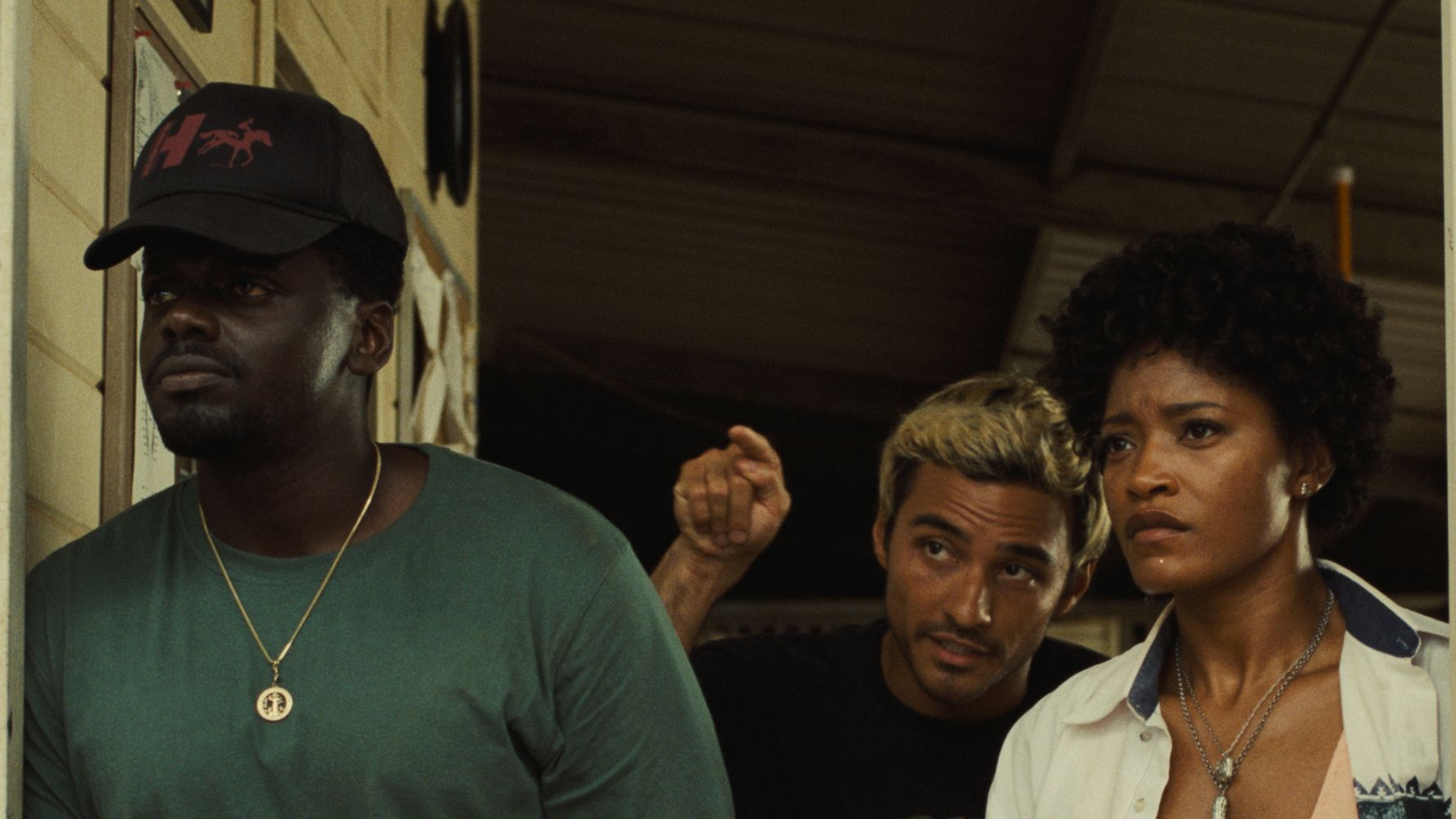About halfway through “Nope,” the latest from writer-director Jordan Peele, the camera fixates on the exterior of a large multistory house situated on a vast land. It’s dark outside, and the image we witness is utterly arresting: Blood and debris drop from the sky and ooze down each crevice of the dwelling.
This moment from the filmmaker’s third big-screen outing is imprinted on the brain so heavily, days after watching it, because it encapsulates a bevy of visceral fears brought on by an eerie sense of desolation, occupation and apocalyptic violence that seem almost … biblical?
While the end-of-days motif captured in the Book of Revelation sprang to mind while watching this brief scene of horror, it’s hard to tell what exactly lies beneath the surface of what we’re watching in “Nope.”
“I don’t know why people can’t let me just make a movie,” Peele told GQ magazine in a recent interview.
Though it’s understandable that each time the director comes out of the gate with any new piece of horror or sci-fi genre, the now-canceled “The Twilight Zone” series included, the work is prodded, theorized and scrutinized practically to death.
But that’s the bar that Peele has set for himself. “Get Out,” his terrific debut film, which earned him a writing Oscar, included a story that was simply and definitively told yet filled with fascinating allegory that fans still fuss over, five years after its release.
In “Us,” Peele’s sophomore film, which bristled with classic horror influences — from “The Shining” to the original “The Twilight Zone” — it became clearer with each minute that Peele was wrestling with a number of sometimes disconnected cultural and self-reflective phenomena in his mind. Like the Hands Across America image, for instance.
As a result, “Us” is a thrilling, well-performed film that is still endlessly fun to dissect but leaves you with a number of frustratingly unanswered questions. As with many genre filmmakers before Peele, we’ve become accustomed to trying to unlock what each of his films, and, by extension, the filmmaker, is trying to say. Even if we never get a concrete answer.
“Nope” is no exception. Closer to the slick visuals of “Get Out” but with a more probing narrative, akin to “Us,” “Nope” is as much an experience as all of Peele’s efforts, with a similarly intriguing premise. OJ Haywood (Daniel Kaluuya), a taciturn heir to a Hollywood horse wrangling business, is walking with his father and namesake Otis (Keith David) on their ranch one day when the sky suddenly turns pitch black and pellets the dad with a heavy object, killing him instantly.
These first few minutes of the film are as shocking to watch as they are remarkable, made even more so by Kaluuya’s quiet and tempered reaction, followed by residual grief. Then, just as quickly, we see something else flash upon the screen: The dead Otis Sr.’s face with his eye gouged out where the object made contact.
Though that seems like enough to get a horror movie going, at least propelling its characters to find out the why and how of it all as the audience’s own curiosity mounts, Peele doesn’t stay in this space. Instead, he pivots to the story of his protagonists, OJ and his sister Emerald (Keke Palmer), left struggling to sustain their inherited business in the age of computer-generated animals on screen.
Peele seems to overly anticipate uneducated opinions surrounding the fact that these are Black siblings living on a horse ranch, an image that counters much of what we’ve seen on Hollywood screens. But anyone who’s done a little digging would tell you that Black cowboys have a long legacy.
And the most curious would point to the first ever film, “The Horse in Motion,” as evidence of a Black man on a horse in the most nascent stage of Hollywood.
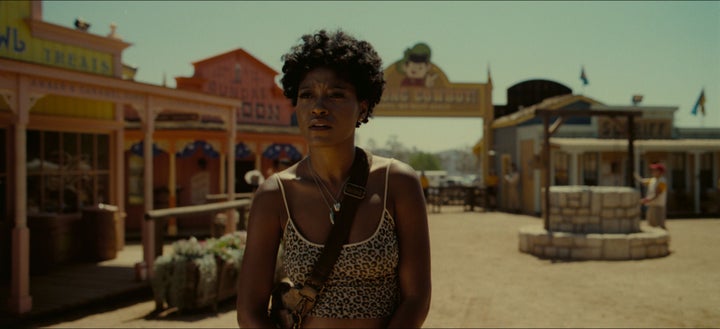
But “Nope” reminds us of that with Emerald’s robust introductory monologue, which proudly rehashes this information as the siblings are on a prospective job, adding that they are actually descendants of that mystery Black Hollywood cowboy seen on a screen well over a century ago. Cue the blank faces of the mostly white people in the room.
It’s an exciting moment of pride, brought to new life by an effervescent Palmer, who as Emerald is both an heiress as well as a typical Hollywood mover and shaker, always on the search for her next side hustle. Or, as she explains to OJ, her main hustle. Horse wrangling is actually what she does when she’s not moving and/or shaking in Tinseltown. And don’t you forget it.
(If you haven’t seen the film yet, you could still probably hear Keke “Keep a Job” Palmer saying this.)
As interesting as this all is, including the banter between the two very different siblings, you can’t help but wonder about the old man whose face was mysteriously deformed by a violent sky at the start of the film. Why are the main characters just … accepting that?
Perhaps there’s much to be said about our willingness to accept what we’re told, even with the best forensics, but anyone who’s watched any horror film wants to know why the strange thing happened. But Peele never really answers that and doesn’t make it a particular priority for his characters to wonder about it either.
That has now become a recurring issue that began with “Us.”
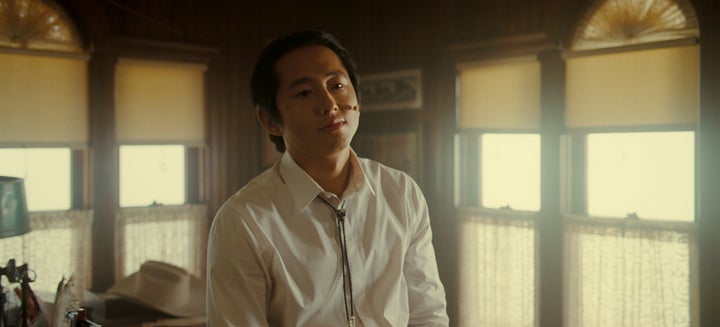
Instead, the filmmaker spends more time delving into the state of Emerald and OJ’s relationship — strained by an incident that is only vaguely revealed in flashbacks — and expanding their world along the rodeo margins to include the enigmatic Ricky “Jupe” Park (Steven Yeun).
Admittedly, that latter detour from the whole Big, Bad Sky situation is fascinating — partly because Yeun rounds out a trio of mesmerizing performances as a former child sitcom star turned theme park owner who witnessed a chimpanzee massacre his entire cast. It strangely left him unscathed.
He recalls this story to a fascinated Emerald and an impatient OJ through bizarrely empty eyes, which seem to hold hundreds of stories that are all untold and a lifetime of unprocessed trauma.
While there’s a callback to this chimpanzee figure in the film’s other genuinely unnerving moment involving OJ in a barn, most of Ricky’s story falls through a drain. And after thinking about it some more, the barn moment plays like a welcome jump scare that doesn’t really connect to Ricky more than it does anything else.
As many intriguing questions as all of that spurs, with no adequate answers, Peele finally brings us back to the celestial horror that catalyzes the film. The dark cloud returns to the siblings’ ranch and crystallizes into what appears to be a UFO, witnessed by an aghast OJ. Is whatever/whoever that is in there the same who killed their father?
Yes, that question still takes up a lot of real estate in the brain even at this late act in the film.
And it’s never answered. All OJ, and soon Emerald and the audience, know is that this thing is hovering around them, responsible for all the scary things that have happened and will happen to them (the sky raining blood on the house, for instance), and now they have to somehow respond appropriately.
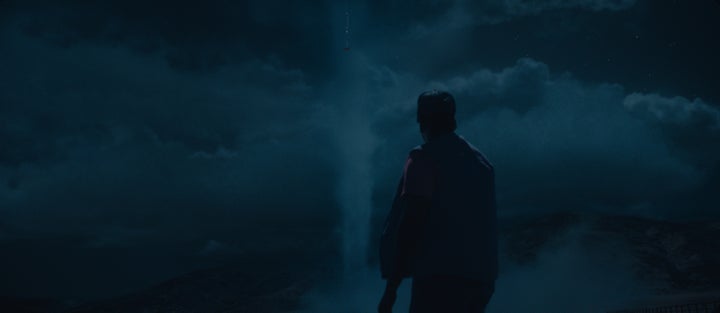
But these are Black folks. So, contrary to their white counterparts, they might not be so gung-ho to investigate the situation. Hence why the titular word is repeatedly uttered throughout the film — like the two separate times when OJ and Emerald first lay their eyes on the flying saucer. “Nope,” time to get back in the house.
Comedy in horror rarely works, but Peele has always had a knack for infusing deadpan precisely when it’s called for, as Wes Craven famously did in “Scream.”
That’s when “Nope” really comes alive. Its already gorgeous cinematography is elevated, and the frightening action is finally kicked into the highest gear. Not because Emerald and OJ decide to try to combat the thing or become its victims (well, that second part is arguable, since they are trapped and occupied by an inexplicable force on their own land).
Rather, these down-on-their-luck yet scrappy horse wranglers opt to monetize the whole thing by catching it on camera, with the help of a tech employee (Brandon Perea) who works at a Best Buy stand-in and a renowned cinematographer (Michael Wincott). At this point, “Nope” is no longer strictly a UFO movie.
Peele is trying, ever so gingerly, to reflect our constant need to be viral superstars, even in the face of imminent danger. And the peril is surely abundant.
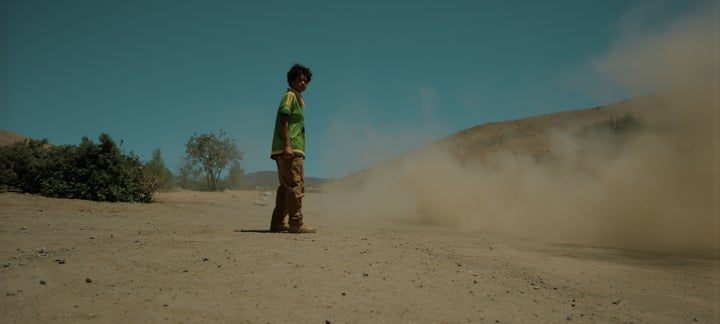
Jojo Whilden/Universal Pictures
But while the image of two Black siblings trying to preserve their ranch and save each other in the process is electrifying to watch in this horror/western world Peele has created, you can’t help but wonder about all the questions that poke holes in an otherwise fulfilling experience. Like, why does looking up at the thing lead to a person’s demise?
And why did it choose Otis Sr.? (There are other more spoilery questions, but the whole thing about the father still nags.)
Peele has so many interesting ideas culled, presumably, from life experiences as well as things he ponders that he clearly wants us, too, to ponder in this heightened world of horror. And though those big ideas, theories and subversive images echo a long history of creepy and delightful wonder, they don’t always support the story.
So, to go back to Peele’s earlier statement to GQ: It’s not that audiences require him to do something beyond making a film. It’s that these films are already doing something that is above and beyond. It’s up to him to connect those dots and make it as worthwhile and provocative as they already are.
“Nope,” even with so much to love about it, doesn’t quite do that.
